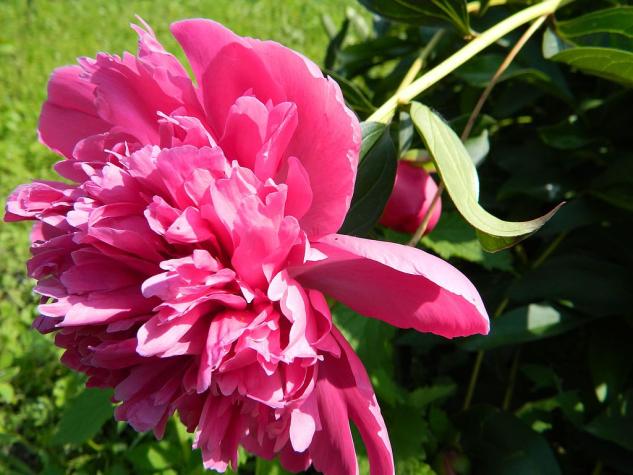COLUMBIA, Mo. – Few flowers symbolize the arrival of spring more than peonies. Their huge, lavish blooms and distinctive floral scent make them one of America’s most treasured perennials, said University of Missouri Extension horticulturist David Trinklein.
Peony is the common name for plants in the genus Paeonia, the only genus of the Paeoniaceae family. Cultivated for more than 4,000 years, peony has been used as a medicine for treating ailments ranging from gallstones to epileptic seizures. It’s named after Paeon, who in Greek mythology was the student of Asclepius, god of medicine and healing. According to legend, Asclepius became jealous of Paeon and threatened to kill him. Zeus rescued Paeon by turning him into a flower.
Garden peonies usually are bushy herbaceous perennials growing up to 3 feet high. “Peonies have deeply lobed leaves and extravagant, delightfully fragrant flowers up to 6 inches in diameter and available in a myriad of colors,” said Trinklein.
While most garden peonies are herbaceous in growth habit and die back to the ground each winter, there are tree peonies that maintain woody stems throughout the year. They are not really trees but grow into small- to medium-sized shrubs that rarely grow more than 4 or 5 feet high in Missouri’s climate.
Peonies need plenty of room. They should be planted 3-4 feet apart in a fertile garden loam where they will have full sun exposure. Too much shade is a key reason peonies fail to flower.
Peonies tend to be long-lived, so proper soil preparation is important. Incorporate well-decomposed organic matter 10-12 inches deep in the general area and make individual holes wide enough to spread the roots adequately. Incorporate a modest amount of fertilizer high in phosphorus, such as 5-10-5 or bone meal, and mix it well into the soil.
Somewhat shallow planting is preferred since flowering is reduced or inhibited if the growing points of the crown are set more than 2 inches deep.
Peonies can often remain undisturbed in the garden for 20 or more years without a decline in flowering. Divide them only if growth is poor and plants fail to bloom after years of performing well.
Fertilize peonies sparingly. Too much fertilizer, especially nitrogen, can lead to poor flowering. If top growth slows and plant vigor declines, apply several tablespoons of a complete fertilizer high in phosphorus and potassium, such as 6-24-24, about 6-18 inches away from the crown. Fall application is preferred, but early spring is satisfactory.
Peonies are relatively pest-free and rarely require pesticides. The most troublesome disease of peonies, bud blight, often appears during cool, wet springs. Strict sanitation, including removal of spent plant debris, reduces disease risk, as does proper plant spacing to increase air circulation.
Trinklein says some people mistakenly believe that ants are necessary for peony flowers to open. Ants are usually present on peony buds because of the sweet exudates they produce, but they do not help or hinder the plant in any way.
Photo: Pink peony
Pink peony. Photo by Oleksandra Deriy, shared under CC BY-SA 4.0, via Wikimedia Commons, via Wikimedia Commons.
